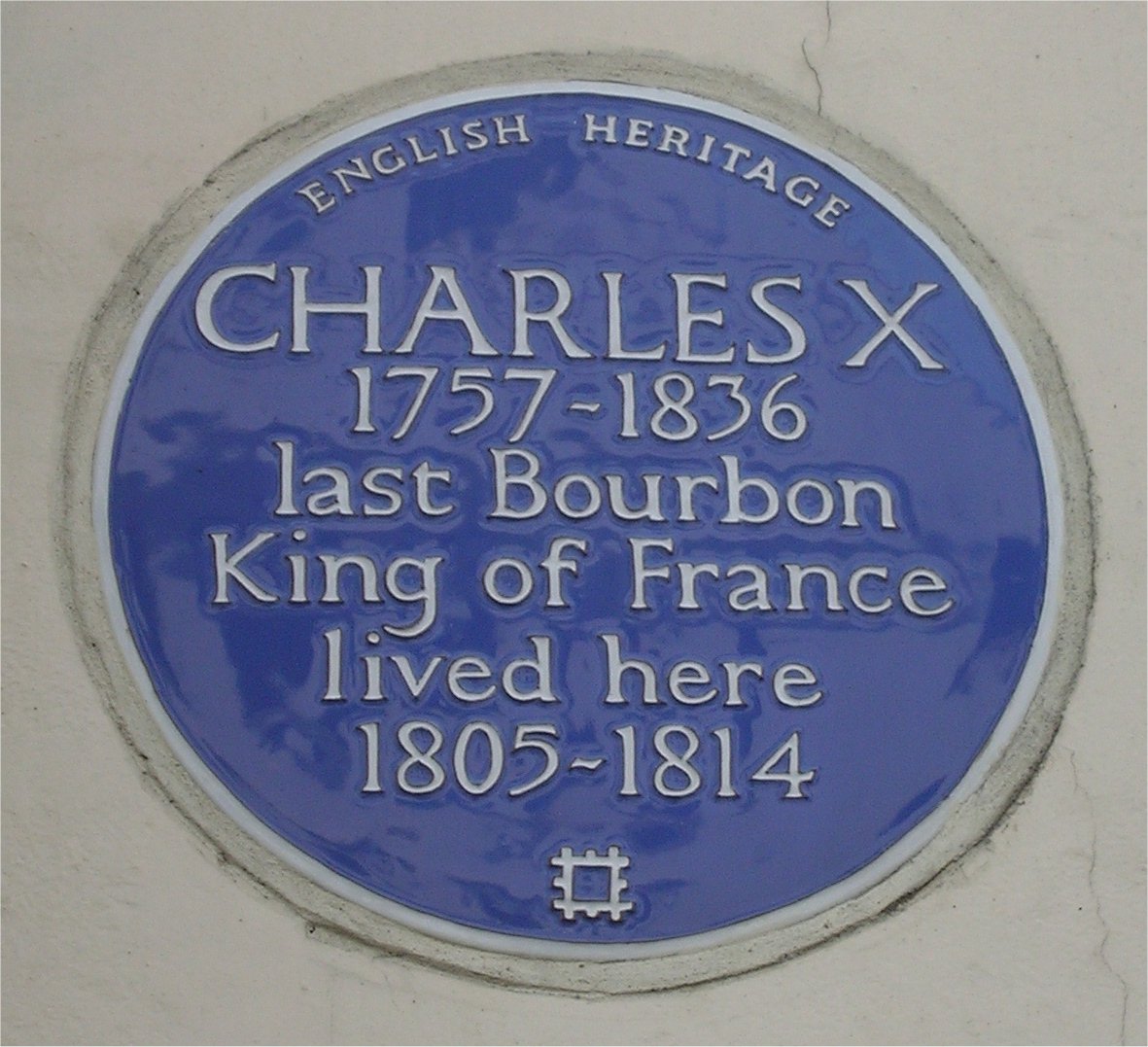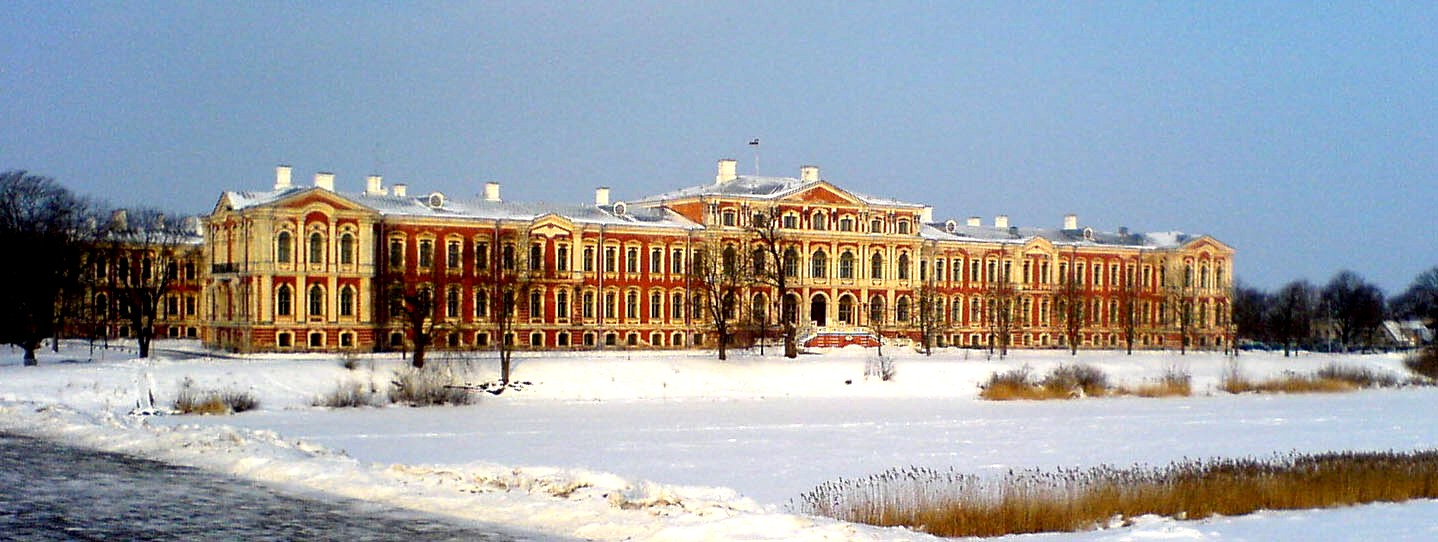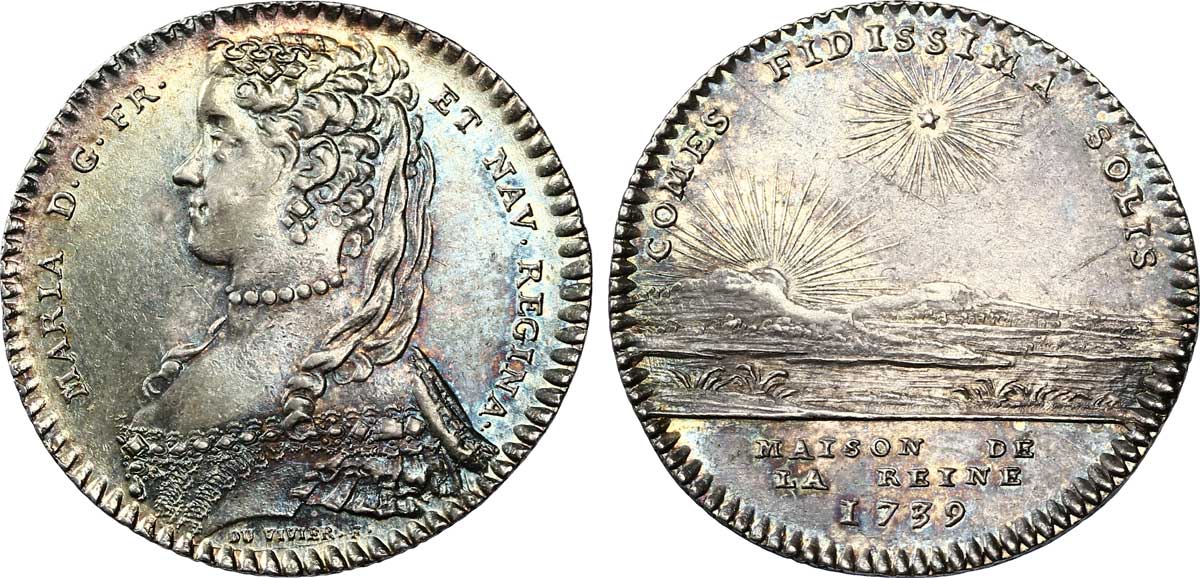|
Anna Leszczyńska (1660–1727)
Anna Leszczyńska née Jabłonowska (1660–1727) was a Polish szlachta, noblewoman, born into the House of Jablonowski and the mother of King of Poland Stanislaus I Leszczyński. Life She was the daughter of Hetman Princes of the Holy Roman Empire, Prince Stanisław Jan Jabłonowski (Prus III), Jabłonowski (1634-1702) and his wife, Marianna Kazanowski family, Kazanowska (1643-1687). In 1676, she married the Grand Treasurer of the Crown, Grand Treasurer Rafał Leszczyński, son of Deputy Chancellor of the Crown, Deputy Chancellor Bogusław Leszczyński. Her son Stanisław Leszczyński became King of Poland with Swedish support in 1704 and reigned until 1709. During his first reign her brother Jan Stanisław Jabłonowski, Jan served as Crown Chancellor. Anna Leszczyńska reportedly lived with her son and his family in his exile after the deposition of 1709, when he moved from Poland to Sweden, in 1714 to Zweibrücken in Germany, and finally, in 1718, to France. Her relations ... [...More Info...] [...Related Items...] OR: [Wikipedia] [Google] [Baidu] |
Rafał Leszczyński (1650–1703)
Rafał Leszczyński (1650–31 January 1703) from the Leszczyński family of Counts of the Holy Roman Empire, was a Polish nobleman (szlachcic), father of King of Poland Stanisław Leszczyński, Stanisław I Leszczyński. Biography Rafał held the following noble positions: *Podstoli of the Crown in 1676 *Stolnik of the Crown in 1677 *Krajczy of the Crown in 1678 *Great Chorąży of the Crown in 1683 *Voivode of Kalisz Voivodeship (1314–1793), Kalisz Voivodeship on 1685 *Voivode of Poznań Voivodeship in 1687 *Voivode of Łęczyca Voivodeship and General Starost of Greater Poland in 1692 *Grand Treasurer of the Crown in 1702 *Starost of Wschowa, Mostyska, Mościska, Odolanów, Dubno and Nowy Dwór Gdański, Nowy Dwór References 1650 births 1703 deaths Secular senators of the Polish–Lithuanian Commonwealth Leszczyński family, Rafal Polish people of German descent {{Poland-noble-stub ... [...More Info...] [...Related Items...] OR: [Wikipedia] [Google] [Baidu] |
Grand Treasurer Of The Crown
Podskarbi in the Kingdom of Poland and later in the Polish–Lithuanian Commonwealth was minister responsible for the treasury. Since 1569 also a senatorial office. The title although meaning treasurer can be deconstructed as "''underingtreasury''" – treasury as an old-fashioned adjective. One other title was formed in the same way: "podkomorzy" – not meaning vice. Following treasury offices where among 14 most important national ministers: * Podskarbi wielki koronny – Grand Treasurer of the Crown (till 15th century called Podskarbi koronny – Treasurer of the Crown) was the highest ranking treasurer. * Podskarbi wielki litewski – Grand Treasurer of Lithuania * Podskarbi nadworny koronny – Court Treasurer of the Crown * Podskarbi nadworny litewski – Court Treasurer of Lithuania Lesser treasurers: * Podskarbi nadworny – Court Treasurer * Podskarbi Prus – Treasurer of Prussia * Podskarbi ziemski – District Treasurer During the rule of King Casimir II ... [...More Info...] [...Related Items...] OR: [Wikipedia] [Google] [Baidu] |
1727 Deaths
Events January–March * January 1 – (December 21, 1726 O.S.) Spain's ambassador to Great Britain demands that the British return Gibraltar after accusing Britain of violating the terms of the 1713 Peace of Utrecht, Treaty of Utrecht. Britain refuses and the Thirteenth Siege of Gibraltar begins on February 22. * January 6 – Martin Spanberg and two other members of the First Kamchatka expedition arrive in Okhotsk, after a journey from Saint Petersburg of almost two years. After the end of winter, the 63-member group, commanded by Vitus Bering, proceeds to the Kamchatka River, to prepare for exploration of the Arctic. * January 9 – The world-famous Charité Hospital is established in Berlin, to be used for research and to help the poor. Prussia's Frederick William I of Prussia, King Frederick William I had ordered the conversion of a 16-year old institution, originally built in anticipation of an epidemic of the bubonic plague. * January 12 – ... [...More Info...] [...Related Items...] OR: [Wikipedia] [Google] [Baidu] |
1660 Births
Year 166 ( CLXVI) was a common year starting on Tuesday of the Julian calendar. At the time, it was known as the Year of the Consulship of Pudens and Pollio (or, less frequently, year 919 ''Ab urbe condita''). The denomination 166 for this year has been used since the early medieval period, when the Anno Domini calendar era became the prevalent method in Europe for naming years. Events By place Roman Empire * Dacia is invaded by barbarians. * Conflict erupts on the Danube frontier between Rome and the Germanic tribe of the Marcomanni. * Emperor Marcus Aurelius appoints his sons Commodus and Marcus Annius Verus as co-rulers ( Caesar), while he and Lucius Verus travel to Germany. * End of the war with Parthia: The Parthians leave Armenia and eastern Mesopotamia, which both become Roman protectorates. * A plague (possibly small pox) comes from the East and spreads throughout the Roman Empire, lasting for roughly twenty years. * The Lombards invade Pannonia (mo ... [...More Info...] [...Related Items...] OR: [Wikipedia] [Google] [Baidu] |
Charles X Of France
Charles X (Charles Philippe; 9 October 1757 – 6 November 1836) was King of France from 16 September 1824 until 2 August 1830. An uncle of the uncrowned Louis XVII and younger brother of reigning kings Louis XVI and Louis XVIII, he supported the latter in exile. After the Bourbon Restoration in France, Bourbon Restoration in 1814, Charles (as heir-presumptive) became the leader of the ultra-royalists, a radical monarchist faction within the French court that affirmed absolute monarchy by Divine Right of Kings, divine right and opposed the constitutional monarchy concessions towards Classical liberalism, liberals and the guarantees of civil liberties granted by the Charter of 1814. Charles gained influence within the French court after the assassination of his son Charles Ferdinand, Duke of Berry, in 1820 and succeeded his brother Louis XVIII in 1824. Charles's reign of almost six years proved to be deeply unpopular amongst the liberals in France from the moment of Coronation of ... [...More Info...] [...Related Items...] OR: [Wikipedia] [Google] [Baidu] |
Louis XVIII Of France
Louis XVIII (Louis Stanislas Xavier; 17 November 1755 – 16 September 1824), known as the Desired (), was King of France from 1814 to 1824, except for a brief interruption during the Hundred Days in 1815. Before his reign, he spent 23 years in exile from France beginning in 1791, during the French Revolution and the First French Empire. Until his accession to the throne of France, he held the title of Count of Provence as brother of King Louis XVI, the last king of the ''Ancien Régime''. On 21 September 1792, the National Convention abolished the monarchy and deposed Louis XVI, who was later executed by guillotine. When his young nephew Louis XVII died in prison in June 1795, the Count of Provence claimed the throne as Louis XVIII. Following the French Revolution and during the Napoleonic era, Louis XVIII lived in exile in Prussia, Great Britain, and Russia. When the Sixth Coalition first defeated Napoleon in 1814, Louis XVIII was placed in what he, and the French ... [...More Info...] [...Related Items...] OR: [Wikipedia] [Google] [Baidu] |
Louis XVI Of France
Louis XVI (Louis-Auguste; ; 23 August 1754 – 21 January 1793) was the last king of France before the fall of the monarchy during the French Revolution. The son of Louis, Dauphin of France (1729–1765), Louis, Dauphin of France (son and heir-apparent of Louis XV, King Louis XV), and Maria Josepha of Saxony, Dauphine of France, Maria Josepha of Saxony, Louis became the new Dauphin of France, Dauphin when his father died in 1765. In 1770, he married Marie Antoinette. He became King of France and Navarre on his grandfather's death on 10 May 1774, and reigned until the proclamation of the abolition of the monarchy, abolition of the monarchy on 21 September 1792. From 1791 onwards, he used the style of king of the French. The first part of Louis XVI's reign was marked by attempts to reform the French government in accordance with Enlightened absolutism, Enlightenment ideas. These included efforts to increase Edict of Versailles, tolerance toward non-Catholics as well as abolishing ... [...More Info...] [...Related Items...] OR: [Wikipedia] [Google] [Baidu] |
Louis XV Of France
Louis XV (15 February 1710 – 10 May 1774), known as Louis the Beloved (), was King of France from 1 September 1715 until his death in 1774. He succeeded his great-grandfather Louis XIV at the age of five. Until he reached maturity (then defined as his 13th birthday) in 1723, the kingdom was ruled by his grand-uncle Philippe II, Duke of Orléans, as Régence, Regent of France. André-Hercule de Fleury, Cardinal Fleury was chief minister from 1726 until his death in 1743, at which time the king took sole control of the kingdom. His reign of almost 59 years (from 1715 to 1774) was the second longest in the history of France, exceeded only by his predecessor, Louis XIV, who had ruled for 72 years (from 1643 to 1715). In 1748, Louis returned the Austrian Netherlands, won at the Battle of Fontenoy of 1745. He ceded New France in North America to Great Britain and Spain at the conclusion of the disastrous Seven Years' War in 1763. He incorporated the territories of the Duchy of Lorr ... [...More Info...] [...Related Items...] OR: [Wikipedia] [Google] [Baidu] |
Marie Leszczyńska
Maria Karolina Zofia Felicja Leszczyńska (; 23 June 1703 – 24 June 1768), also known as Marie Leczinska (), was Queen of France as the wife of King Louis XV from their marriage on 4 September 1725 until her death in 1768. The daughter of Stanislaus I Leszczyński, the deposed King of Poland, and Catherine Opalińska, her 42-years and 9 months service was the longest of any queen in French history. A devout Catholic throughout her life, Marie was popular among the French people for her numerous charitable works and introduced many Polish customs to the royal court at Palace of Versailles, Versailles. She was the grandmother of the French kings Louis XVI, Louis XVIII and Charles X of France, Charles X. Early life Born as a member of the Leszczyński, House of Leszczyński, Maria Karolina Zofia Felicja Leszczyńska (Wieniawa coat of arms, Wieniawa) was the second daughter of Stanislaus I Leszczyński and his wife, Catherine Opalińska, Countess Catherine Opaliński family, Opal ... [...More Info...] [...Related Items...] OR: [Wikipedia] [Google] [Baidu] |
Catherine Opalińska
Countess Catherine Opalińska (; 13 October 1680 – 19 March 1747), was by birth member of House of Opaliński, Queen consort and Grand Duchess consort of the Polish–Lithuanian Commonwealth twice and Duchess consort of Lorraine through her marriage with Stanisław I of Poland and Lithuania. Born into the Polish aristocratic family of Opaliński, Catherine married Stanisłaus Leszczyński in 1698 and six years later he was elected as King of Poland and Grand Duke of Lithuania, due to the support of Charles XII of Sweden where she repaid this favour by favouring Swedish people at court. In 1708 Catherine was sent to Stettin due to the increasingly unstable political environment and a year later her husband was deposed due to the loss of Swedish dominance in the Commonwealth; and she and her family were exiled to Sweden and were welcomed by the dowager queen, Hedwig and they became popular members of high society. In 1714 they moved to the Swedish ruled town of Zweibrücken w ... [...More Info...] [...Related Items...] OR: [Wikipedia] [Google] [Baidu] |
Jan Stanisław Jabłonowski
Jan Stanisław Jabłonowski of the Prus III coat of arms (1669 - 28 April 1731 in Lviv) was a Polish political writer who was a maternal uncle of King Stanisław I Leszczyński, under whom he served as Crown Chancellor in 1706–09. He also held the positions of Crown standard-holder from 1687, voivode-governor of Volhynia since 1693, and also voivode-governor of Ruthenia from 1697. He was the son of Marianna Kazanowska and Stanisław Jan Jabłonowski. Through them he was the brother of Aleksander, Stanisław, Jadwiga, and Anna. Through Anna, he was the uncle of King Stanisław Leszczyński and grand-uncle of Queen Maria Leszczyńska. Despite this family relationship, in 1704, he took part in the Confederation of Sandomierz which supported Augustus II the Strong against his nephew. After Augustus was dethroned, he was suggested as a possible candidate, but never put himself forward; as part of the Northern Wars, Stanisław I Leszczyński was already supported by Karl ... [...More Info...] [...Related Items...] OR: [Wikipedia] [Google] [Baidu] |
Bogusław Leszczyński
Bogusław Leszczyński, count of Leszno (1614–1659) from the Leszczyński Family of Holy Roman Empire counts, was a Polish noble (''szlachcic'') and politician from Wielkopolska region. Biography Traveled abroad from 1632-1636 with his tutor John Jonston, studied under Comenius. Bogusław held the following official positions: *General Starost of Greater Poland in 1642 *Grand Treasurer of the Crown 1650–1658Robert I. Frost (2004) ''After the Deluge: Poland–Lithuania and the Second Northern War, 1655-1660'', Cambridge University Press, , p. xvii * Deputy Chancellor of the Crown in 1658–1660 *Starost of Bydgoszcz, Sambor, Międzyrzecz, Ostrów, Człuchów and Osiek. He was the son of Rafał Leszczyński, count of Leszno, and Anna Radzimińska.Jan Grzywiński (1938) (in Polish). ''Kalendarz Ilustrowany kuryer codzienny''. Krakow: Nakł. wydawn. "Ilustr. kuryera codziennego". Volume 11, p. 222. . After the death of his father in 1636 he inherited Leszno, Radzymin a ... [...More Info...] [...Related Items...] OR: [Wikipedia] [Google] [Baidu] |





